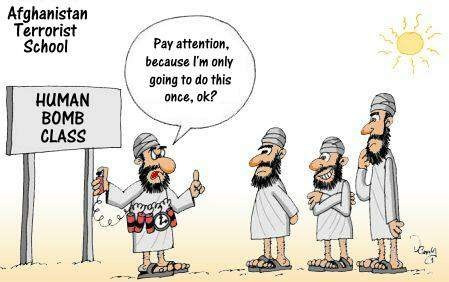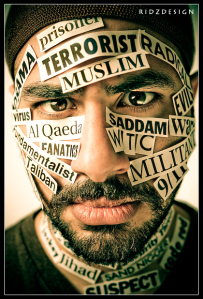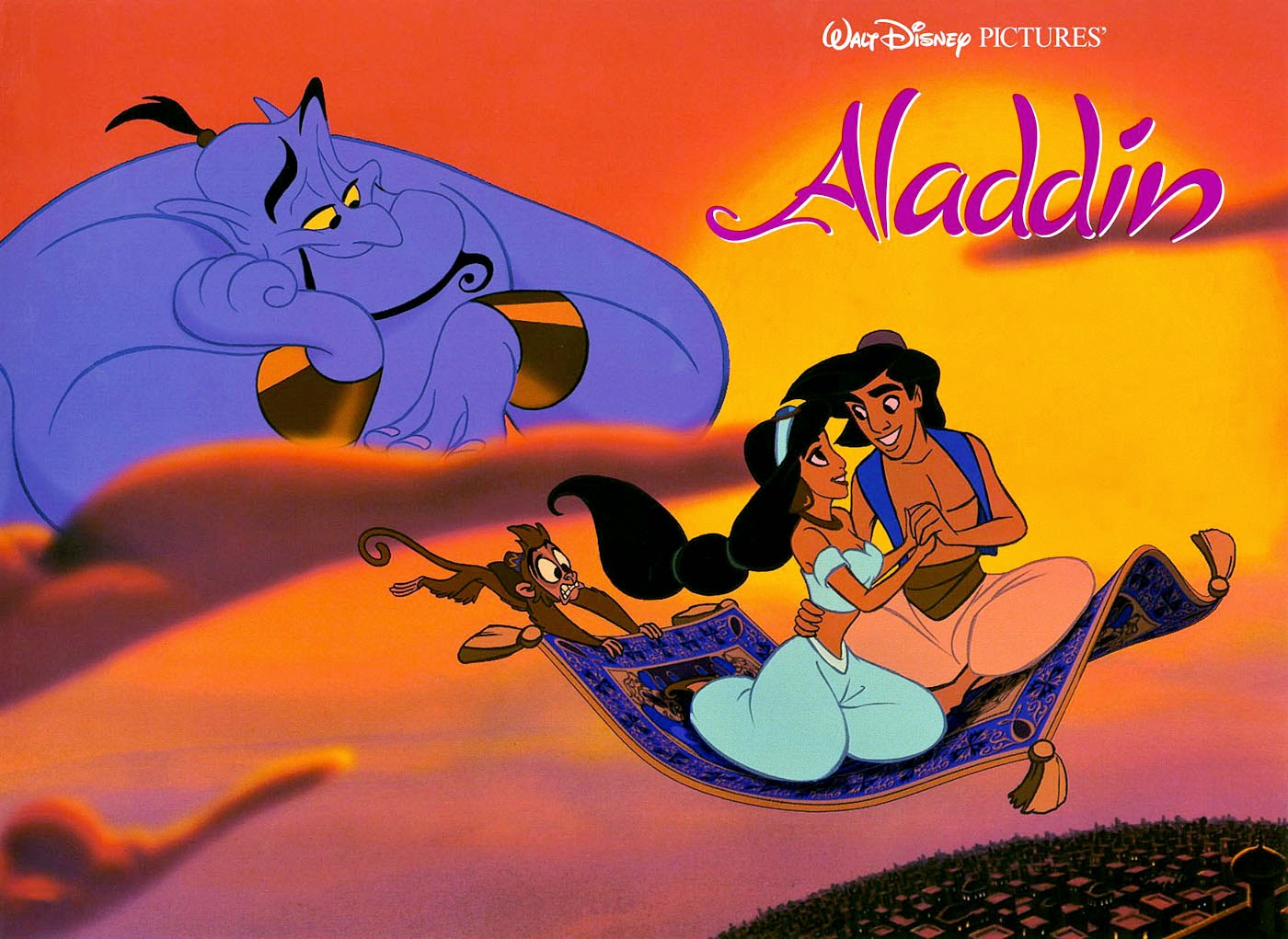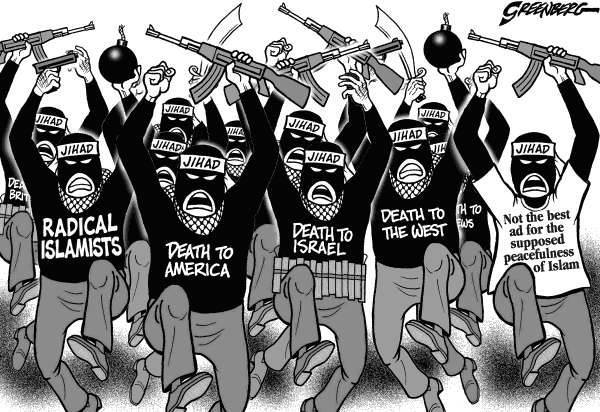Written by Rasheffa Rashid
Post-tragedy September 11 in 2001, the world especially the western counties became more aware of the existence of Muslims, unfortunately for the wrong cause. The way the western media portrayed and exposed the incident that took over 3000 lives, blamed a group of Muslims and labelled them as terrorists for intruding and killing innocent people. The misconception of media had made the world especially the western, with some have not ever heard of the religion Islam started hating without understanding further and they also believed the information media fed them with. The Federal Bureau of Investigation (FBI) reported a 1,700 percent increase of hate crimes against Muslim Americans between the years of 2000 to 2001.

Since September 11, the perception on Islam and its followers in America changed and every Muslim was started to be labelled as terrorist. The western media had its own agenda in portraying the incident which some experts claim is a conspiracy against Islam itself or maybe the Arab world. The 9/11 “terrorist attack” also impacted other Muslim countries and also affected the Asians.
Even after 15 years since the tragedy, Muslims are still trying hard to clear the tarnished name of Islam. Many efforts had been taken to educate the western world on the simplicity and humbleness of the religion. While these efforts were in progress, some western population started to understand the religion better, with some decided to follow the faith of Islam. Figures by Muslimpopulation.com proved that the Muslim population has been increasing with high rates of conversions and through births. Islam has become the fastest-growing religion and now has the largest followers on the planet with 2.08 billion Muslims. The site estimates that by 2030, one out of three persons in the world will be Muslim.

However, this did not stop the western media from continuously stereotyping Muslims (Asian Muslims or Arab Americans) if a terror attack or a bombing incident occurs. The initial suspects are always Muslims. Osama bin Laden was always the main suspect for the attacks, and after his depart, The Islamic State (ISIS) is the new plot to blame the involvement of Muslims in terrorism activities. For example, the Daily Mail on 26 June 2016 with the headline: Terror suspect dubbed ‘the man in the hat’ after Paris and Brussels attacks becomes British police’s first ISIS Supergrass reported, Mohamed Abrini, 31, a Belgian, had been linked to the recent Paris and Brussels attacks, he was dubbed ‘man in the hat’ due to his attire at Brussels Airport in March. It was reported that Abrini has been helping the British police to stop terrorist plots and jihadists, however, he became the main ISIS suspect for UK, now he faces court hearings in Belgium. He was spotted on CCTV travelling to Paris two days before the Paris attack which killed 130 people in November 2015. He is also investigated for his link to the suicide bombing at Brussels Airport March 2016, which took 22 lives.
These planned attacks that were proclaimed by ISIS changed the perception on Islam where it portrayed the brutality of religion in killing and attacking countries they target. In other ways, the western media is trying to portray that the attacks did not stop with Taliban or Osama bin Laden, it is trying to show to the world that the religion Islam itself is cruel and takes many lives for its own objective, in the name of jihad. The scenario in some way ruined the awareness works conducted to explain about Islam post 9/11. What the western population failed to understand is that most Arabs in America are not necessarily Muslims, and most Muslims are not Arabs, while there are Arab Americans that originate from Lebanon and Syria, while some Muslim Americans are African Americans from South Asia. For them, as portrayed by western media, Muslims are terrorists.
The western media has represented Arabs and Muslims since decades ago. The west conceptualised Islam ever since the first contacts with Arabs Muslims. The term Islam as it is used today seems to mean something simple, the fact is, it is actually part of a fiction, an ideological label and a part of minimal designation of a religion called Islam. Today Islam sadly is a traumatic news in the West.
The negative picture of what Islam and Arabs are was described early in the Middle Ages, especially during the Crusade Wars and along the Arabs expansion in Europe since decades ago. The West promoted almost the same stereotypes for Arabs and Muslims and the pattern is now carried through the many channels of media to brainwash and block the minds of the people in the western world, suiting its agenda.
Many researchers examined the stereotyped image of Arabs in the Western media since many years ago. This is observed in a study by Shaheen (1983) which portrayed:
“…how the American media stereotypes of Arabs accompany a child from his early years to graduating from college, through editorial cartoons, television shows, comic strips, comic books, students textbook, in magazines and newspapers.” (Shaheen, 1983).
Shaheen said, the Arabs were dehumanized and presented as the ‘bad guys’”.

The west media never respected the Arabs, may it be Arab Americans or Asians; the hatred against Islam has been pre-conceptualized negatively in cartoon images on newspapers and magazines. Scholars had also studied this stereotyped image in editorial cartoons and comic strips. A study by Stockton in (1994) resulted that images of the Arabs had been presented in hundreds of cartoons from editorial pages and comic strips. All the cartoons Stockton studied presented a dehumanizing image of Arabs. The latest incident of humiliating Muslims and Arabs was a comic strip by a French satirical weekly magazine, Charlie Hebdo, publishing a number of cartoons mimicking Prophet Muhammad SAW. This angered Muslim around the world, the magazine later became targets of two terrorist attacks, in 2011 and 2015, respectively.
The American society also stereotypes Arab American women as veiled, docile, home bound victims. A researcher addressed how contemporary American fiction presented Arabs and Muslims as “backward, greedy, lustful, evil, or inhumane”.
“…this group makes “convenient scapegoats in almost all contemporary fiction that deals with Middle East themes”. (Terry, 1983)
The stereotyping of Muslim women began during the Taliban’s insidious reign in Afghanistan, it illustrated lifestyles of the Muslim women under the Taliban rule after 9/11. Muslim women faced discrimination even from the way they dress. Issues on veil and headscarf have been on- going for many-many decades. Among the popular cases is the story of the three students in France where their rights to wear headscarves in school was discriminated. Their acts to stand up for their religion turned many heads, teachers protested and the France government got involved and new guidelines and rules were made siding the school management. The fight of the three girls began in 1989 and it went on until 2003. Between 1994 and 2003, around 100 female students were suspended or expelled from middle and high schools for wearing the scarf in class. In nearly half of these cases, their exclusions were annulled by the French courts.

The identity of the Arabs has also been distorted by the media, the complexions of male and female Arabs described differently, where the men are always shown with dark complexion and the females are often fair. The distortion of Arabs identity is observed in the Disney cartoon ‘Aladin’, where the personality of legendary figure Princess Jasmine was changed ranging from her name to her character. Ascribing to her all the features that are allegedly believed to characterize Muslim and Arab women. The change of identity, the color of complexion and the clothing of Jasmine in the cartoon showed to the world especially children about the characteristic of Arabs, is an indoctrination process to blindfold the people of the world and the young about the Arabs. This proves that the process to spread negativity about Muslims has been designed many-many decades ago through many mediums of the media. The media has the power to influence the mind of its listeners, viewers and readers through many channels where messages are delivered.
The reason for the western media to stereotype Arab Americans and the Muslims around the world, is because of the inferiority of the ‘other’ stereotyped image presents, it is not only promoting the superiority of the stereotyper, but also provides immunity for transgressing against the stereotyped group. Stockton recognized :
“…. that such stereotyping can be justify key policy decisions taken by political power for it to justify injustices committed by individuals or nations against the stereotyped ‘other.” (Stockton, 1994)
The impact of the negative stereotyping of Arabs on Arab Americans, has caused the Arab community to suffer in many ways, as the negative stereotyped image of Arabs has been planted in the minds of Americans and the rest of the world over the decades. It was also found, in a study on American press coverage of the Arab-Israeli conflicts in 1956, 1967 and 1973 that showed negative stereotype of the Arabs was used as a weapon by the American media in favour of Israel. Having its own propaganda to oppress the Muslim world and the religion Islam itself, the America-Israel leaders had plotted the stereotyping of the Arabs Muslims decades ago by misleading the world on the truth about the Muslims and their lifestyle in practising the religion.
References
Anderson, C. (2002, November 25). FBI reports jump in violence against Muslims. Associated Press.
Joseph, A. (26 June 2016) The Daily Mail, Retrieved, 29 Oct 2016 from http://www.dailymail.co.uk/news/article-3660720/Paris-Brussels-terror-suspect-Britain-s-ISIS-Supergrass.html#ixzz4CupeRWTd
Ridouani, D. (2011). The Representation of Arabs and Muslims in Western Media. School of Arts and Humanities (Mekness).
Jolls, H; Alaverdian, A; Adams, L; Silva, R (2002) , The Brookings Institution http://www.brookings.edu/press/REVIEW/winter2002/telhami.htm). Retrieved 1 Nov 2016 from http://www.csun.edu/~sm60012/GRCS-Files/Muslims-post- 9-11.htm.
Suleiman, Michael. (1999). Introduction. In M. Suleiman (Ed.), Arabs in America: Building for a new future (pp. 1-21). Philadelphia: Temple University Press.
Stockton, R. (1994). Ethnic archetypes and the Arab image. In E. McCarus (Ed.), The Development of Arab-American identity (pp. 119-153). Michigan: The University of Michigan Press.
Terry, Janice. (1983). Images of the Middle East in contemporary fiction. In E. Ghareeb (Ed.), Split vision (pp. 315-326). Washington, D.C.: American-Arab Affairs Council.
Image Credit: reclaimourrepublic Image Source
